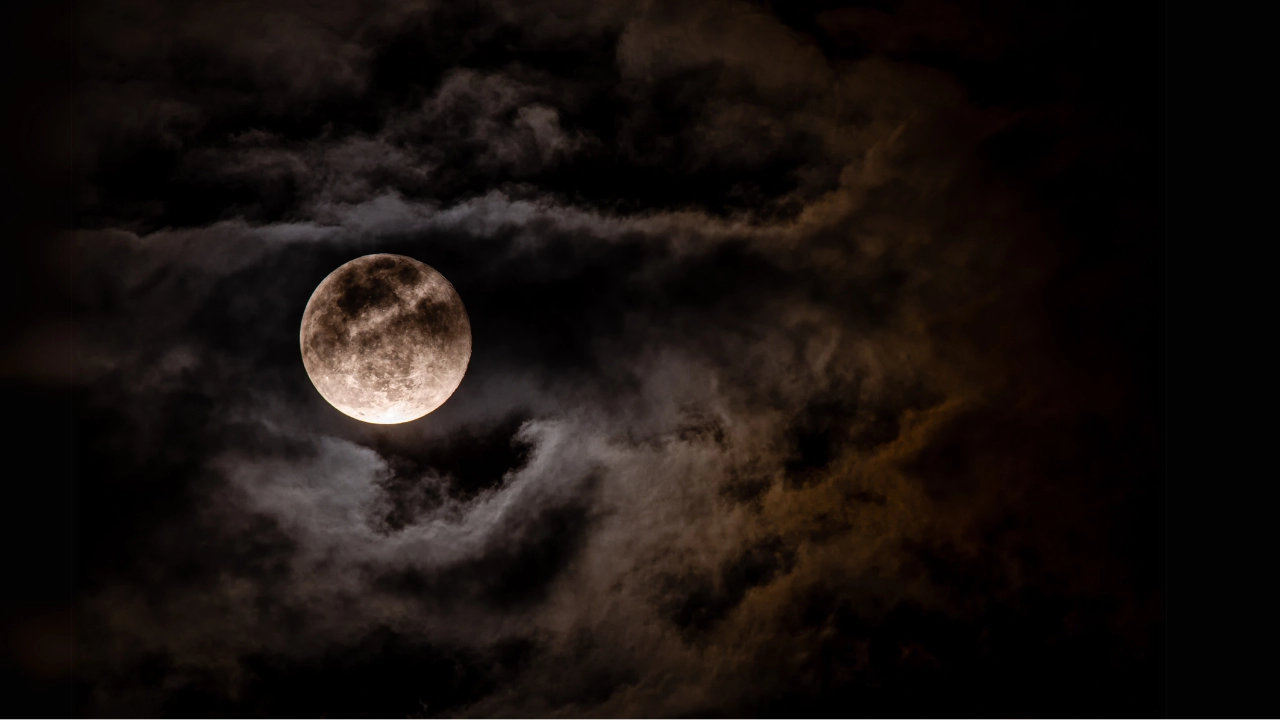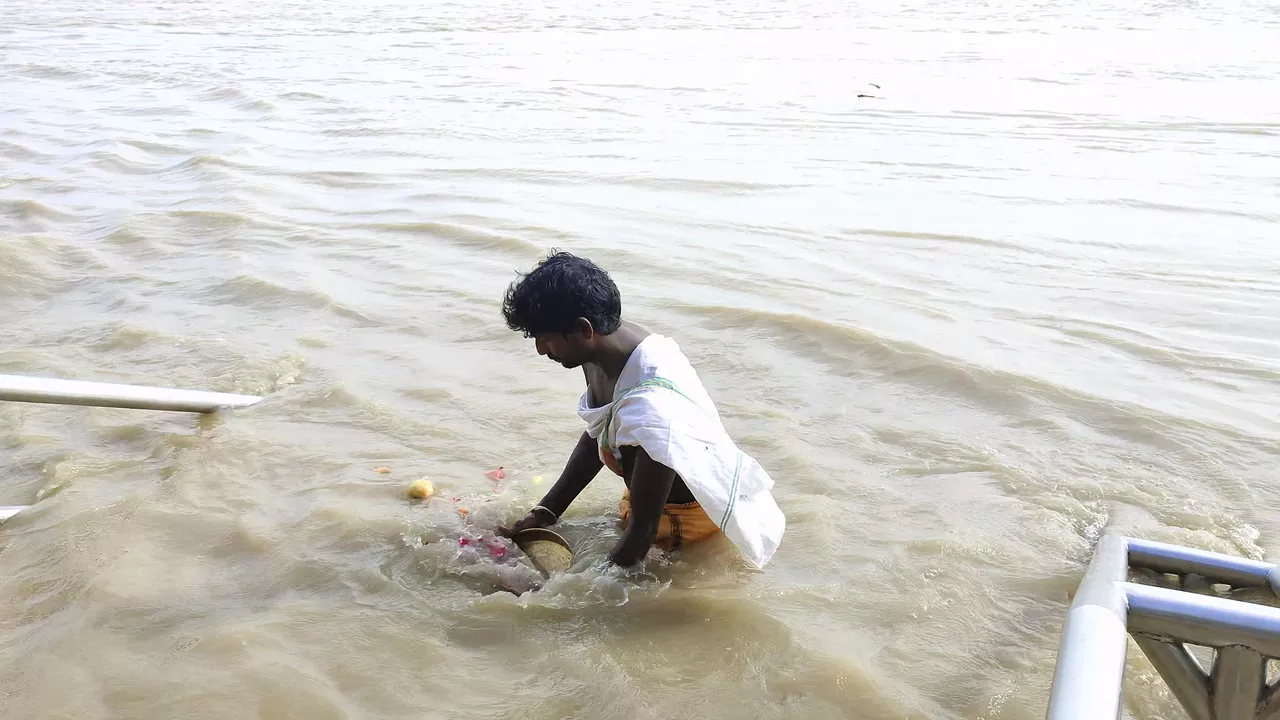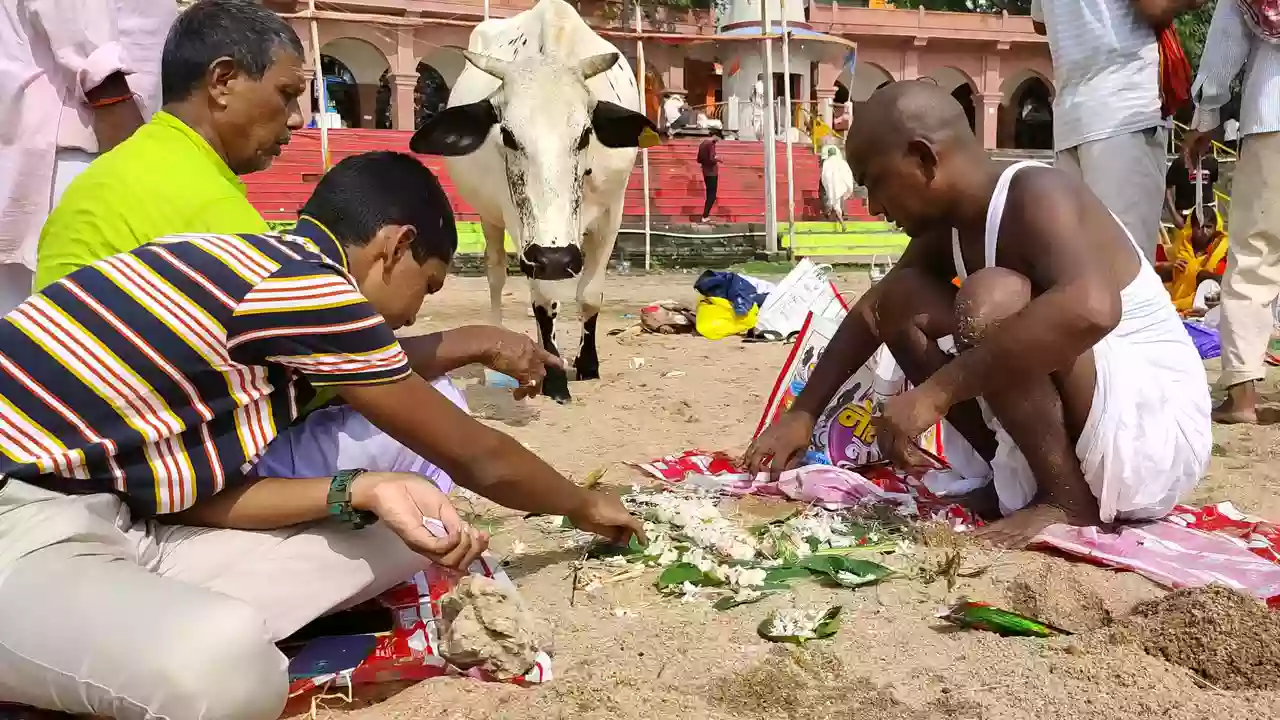Namaste,
We often speak of the Tithis within the main fortnight, but what about those souls who departed on the day of the luminous Full Moon, the Purnima? Their remembrance holds a special place, often marking the very beginning of the focused period of ancestor worship.
As the Moon waxes to its fullest glory, bathing the world in its cool, silvery light, it marks the completion of the Shukla Paksha – the bright fortnight. This is Purnima. While often associated with auspiciousness, festivals, and the worship of deities, Purnima, like any other Tithi, can also be the time when a soul chooses to leave its mortal coil.
Honoring these ancestors requires special attention, particularly because the timing of their Shradh often falls right at the cusp, the very gateway, leading into the main Pitrupaksha period. Understanding Purnima Shradh ensures that these specific Pitrus are venerated correctly and receive their due offerings.
What is Purnima? The Significance of the Full Moon Tithi- What is Purnima Shradh

Before diving into the Shradh specifics, let’s appreciate the Purnima Tithi itself:
- The 15th Tithi: It is the fifteenth and final Tithi of the Shukla Paksha (waxing fortnight).
- Sun-Moon Opposition: Astronomically, it occurs when the Moon is exactly 180 degrees opposite the Sun, receiving its maximum illumination from our perspective on Earth.
- Symbol of Completion: Purnima often symbolizes fullness, completion, peak energy, and illumination. Many important festivals and vratas are celebrated on Purnima days throughout the year (like Guru Purnima, Sharad Purnima, Holi, Raksha Bandhan, etc.).
- Lunar Energy: The energy of the Full Moon is considered potent, affecting tides, nature, and even subtle human energies.
When a person passes away on this significant lunar day, their annual remembrance during Pitrupaksha connects with this unique energy signature.
The Timing: When is Purnima Shradh Performed?
This is where careful understanding is needed, as it differs slightly from the straightforward matching of Tithis within the Krishna Paksha fortnight.
- The Core Pitrupaksha Period: As we know, Pitrupaksha primarily encompasses the Krishna Paksha (waning fortnight) of the Ashwin month (Purnimanta system) or Bhadrapada month (Amanta system). This period begins the day after the Full Moon (Bhadrapada Purnima).
- The Question: So, if Pitrupaksha starts after Purnima, how is Shradh performed for someone who died on Purnima?
Our traditions and scriptures offer guidance, leading generally to two main practices:
Option 1: Observing on Bhadrapada Purnima (Proshthapadi Purnima)
This is a very common and widely accepted practice, especially in North and Central India.
- The Logic: The Shradh is performed on the actual Purnima Tithi that occurs just before the Ashwin Krishna Paksha begins. This day is known as Bhadrapada Purnima (or Proshthapadi Purnima).
- Timing: While the main Pitrupaksha for Tithis 1 (Pratipada) to 15 (Amavasya) starts the next day, the Shradh for Purnima Tithi deaths is often observed on this preceding Full Moon day itself.
- Rationale: It aligns directly with the “match the Tithi” principle, observing the remembrance on the actual anniversary Tithi, even though it technically falls just outside the primary 15-day window designated for the waning phase. It acts as a prelude or an inauguration of the Shradh season.
- Purnima Shradh Date 2025: According to this practice, for the year 2025, Purnima Shradh would be observed on Sunday, 7th September 2025, which is Bhadrapada Purnima.
Option 2: Observing on Sarvapitri Amavasya (Mahalaya)
Another valid approach, followed by some traditions or chosen when there’s uncertainty.
- The Logic: Some schools of thought or family traditions prefer to perform the Shradh for those who died on Purnima Tithi on the last day of Pitrupaksha, i.e., Sarvapitri Amavasya.
- Rationale:
- Amavasya is considered the day capable of satisfying all ancestors (Sarva Pitri).
- Since Purnima technically falls outside the Krishna Paksha, some prefer to include these ancestors in the all-encompassing final day offering.
- It avoids any ambiguity about performing Shradh before the “official” start date of the Krishna Paksha rituals.
- Sarvapitri Amavasya Date 2025: This falls on Sunday, 21st September 2025.
Which Option to Choose? The Importance of Tradition and Consultation
So, which path is correct? The answer often lies in Kula Parampara (family tradition) and regional customs.
- Follow Family Practice: The most important guideline is to follow the tradition passed down in your family. Ask your elders how Purnima Shradh has been observed for ancestors who passed on this Tithi.
- Regional Variations: Practices can differ significantly between North and South India, and even between communities. What is standard in one region might not be in another.
- Consult a Knowledgeable Pandit: If family tradition is unclear, or if you are establishing the practice, consulting a learned Pandit familiar with your community’s customs is the best course of action. They can provide definitive guidance based on scripture and local observance. They can check the Panchang for precise timings and confirm the most appropriate day based on your lineage and location.
Generally, observing on Bhadrapada Purnima itself is more prevalent for Purnima Shradh. However, knowing the Amavasya option exists is important.
Who Should Perform Purnima Shradh?
The eligibility rules are the same as for any other Shradh:
- Primary Duty: The eldest son usually holds the primary responsibility. If he is unavailable or unable, a younger son can perform it.
- Other Relatives: In the absence of sons, the grandson (son’s son), great-grandson, or even an adopted son can perform the rites. If none exist in the direct paternal line, the duty may fall to nephews, the father (for a deceased son without issue), or other specific relations as outlined in the Dharma Shastras. The wife can perform Shradh for her deceased husband in certain circumstances, often through a Brahmin representative.
- Matamaha Shradh Exception: Remember, the Shradh for the maternal grandfather (Nana/Matamaha) is usually performed by a grandson (daughter’s son) specifically on Ashwin Shukla Pratipada (the day after Mahalaya Amavasya), unless there’s no one in the Nana’s own lineage to perform it, in which case other arrangements might apply, sometimes involving Purnima or Pratipada Shradh during Pitrupaksha itself, but this needs specific confirmation. Purnima Shradh typically refers to ancestors within one’s paternal lineage or one’s own spouse who died on Purnima.
Rituals Performed During Purnima Shradh
The rituals observed are similar to those performed on other Shradh days, focusing on Tarpan, Pind Daan (if applicable based on tradition for this day), and feeding Brahmins/the needy.
Tarpan (Water Libation)

- This is a fundamental offering. Facing South (the direction of Pitrus), offer water mixed with black sesame seeds (kala til), and sometimes barley (jau) and Kusha grass, using specific hand gestures (mudras).
- Recite mantras invoking the ancestors, naming the specific ancestor(s) who died on Purnima, their lineage (gotra), and requesting them to accept the offering. “Tila-toyam dadami” (I offer this sesame water).
- This symbolic offering quenches the thirst of the ancestors in the subtle realm.
Pind Daan (Offering Rice Balls)
- This is the offering of food in a symbolic form. Pindas are balls made primarily of cooked rice or barley flour, mixed with ghee, honey, milk, and black sesame seeds.
- Typically, three Pindas are offered – representing the father, grandfather, and great-grandfather (or other relevant ancestors based on who is being remembered).
- Specific mantras are chanted while offering the Pindas on a bed of Kusha grass, inviting the ancestors to accept the nourishment.
Note: Depending on the tradition followed for Purnima Shradh (especially if observed on Bhadrapada Purnima), some might perform only Tarpan and a simpler feeding, saving a more elaborate Pind Daan for Amavasya or performing it as guided by their Pandit. If Purnima Shradh is the main annual Shradh for that ancestor, Pind Daan is generally included.
Brahmin Bhoj or Feeding the Needy (Anna Daan)
- Feeding qualified Brahmins is a highly meritorious act during Shradh. The belief is that what is offered to the Brahmins respectfully reaches the ancestors.
- Prepare sattvic (pure, vegetarian) food, preferably dishes liked by the departed ancestor. Offer it to the invited Brahmin(s) with utmost respect and humility. Dakshina (monetary offering) and other gifts (like clothes, umbrella, footwear – symbolic of needs on a journey) are also given.
- If inviting Brahmins is not feasible, offering food and provisions to the poor and needy is also considered a potent form of Anna Daan that pleases the ancestors.
Prayer, Remembrance, and Reading Scriptures
- Spend time remembering the ancestor, recalling their positive qualities and contributions.
- Chant prayers like the Pitru Gayatri mantra or other stotras dedicated to ancestors.
- Reading relevant sections from scriptures like the Garuda Purana or reciting the Bhagavad Gita can create a spiritually charged atmosphere beneficial for the Pitrus.
Why Honor Purnima Departures Specifically?
While all ancestors deserve remembrance, acknowledging the specific Tithi, including Purnima, holds symbolic value:
- Respecting the Moment: It honours the unique cosmic configuration and energy present at the time of the soul’s departure.
- Symbolism of Fullness: Passing on a Full Moon might be seen symbolically as departing at a time of completion or peak energy in the lunar cycle, a transition marked by light. Honoring them on Purnima acknowledges this.
- Ensuring Inclusion: By having a designated practice for Purnima deaths, our traditions ensure these souls are not forgotten or overlooked simply because their Tithi falls just outside the main Krishna Paksha window.
Purnima Shradh vs. Proshthapadi Purnima Vrat

It’s worth noting that Bhadrapada Purnima itself might be observed for other reasons, such as the start of Ashwin month bathing rituals or sometimes the Uma Maheshwar Vrat or Satyanarayan Vrat. However, the Shradh performed on this day is specifically focused on ancestors who passed away on any Purnima Tithi.
Setting the Tone for Pitrupaksha
Observing Purnima Shradh, often on Bhadrapada Purnima, serves as a poignant beginning to the entire Pitrupaksha fortnight. It sets the tone of remembrance, duty, and reverence. It reminds us that the opportunity to connect with and serve our ancestors has arrived.
So, if you have ancestors who departed on the bright Full Moon day, pay close attention to your family traditions or seek guidance to perform their Shradh correctly, either on the Bhadrapada Purnima or the Sarvapitri Amavasya. This specific act of remembrance is a vital thread in the sacred tapestry of Pitrupaksha.
May the light of the Full Moon illuminate the path for your ancestors, and may their blessings shine upon you and your family.
